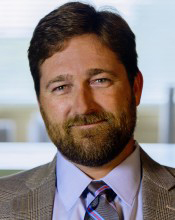Fall Cleanup Sale! Get 10% off all online parts orders + free shipping on orders over $39.99 through 10/20/25. SHOP NOW
Bland Landscaping Owner Kurt Bland Shares His Thoughts on Equipment Asset Management

ESTABLISHED IN 1976, BLAND LANDSCAPING COMPANY proudly claims the spot as one leading full-service providers for high-end residential estates and commercial landscaping. Owner Kurt Bland has enjoyed steady success in the industry, and has gained a great deal of insight into what makes a landscaping business work, and what doesn't. We asked Bland to give us some of that insight, in hopes to help educate landscape contractors of all sizes. Specifically, we asked him to talk about his proven-successful approach to equipment asset management. His thoughts on the topic are below:
Our Equipment Asset Program is a reflection of our general philosophy towards business, which includes a deliberate effort to standardize that which can be standardized, in order to lessen work defects and improve performance overall. Whereas some companies, namely smaller ones, in our industry evaluate their equipment purchasing options annually or even between purchases, our philosophy is to thoroughly examine our options every five years. This way, we can make educated decisions about which equipment to operate for specific functions within the company with a longer term view of ownership and the benefits of standardization.
We work deliberately to reduce the variety of makes and models that we own and operate. This strategy lessens the parts inventory we must stock, and it makes training of mechanics and crew members much more streamlined. For example, all of our walk behind and riding mowers are Gravely brand units. Within the overall fleet, the overwhelming majority of machines are either Pro-Hydro 48-inch walk behinds or 152 XDZ riding mowers. If a crew member gets moved between crews, he is more readily adaptable to the machinery on either crew. If a machine requires repair, chances are that our "service loaner" unit is going to be the same, or very similar model, to the one the crew operates every day. This long term view towards equipment ownership and standardization is a recurring theme that rears its head in other parts of our business, as well.
Historically, we have always owned machinery and vehicle assets ourselves and avoided leasing. This is something we evaluate periodically, and our position may shift, pending the final outcome of changes to tax laws. We view this decision as being strictly a financial and tax planning question. Some companies elect to lease in order to pretty up their balance sheet, while others do it to spread their sources of financed capital to off balance sheet positions. With congress having extended section 179 deductions, and the fact that leased assets will have to be reflected on balance sheets in the future, the once attractive appeal of leasing is diminishing.
That could change, and our position could be influenced by such changes. It really comes down to an assessment of the company and its owners' financial strategy and tax situation. We have grown our business organically and growth has never been allowed to outpace earnings. Continual re-investment into the company has been required in order to fund the capital assets such as trucks, machinery, and real estate. For some companies, growth outpaces earnings, or they may not have a robust balance sheet that allows for traditional financing or cash purchases. Finally, there is one other feature about leasing that we have considered, which is the ability to return the machines at the end of a lease without having to sell them. So far, this benefit has not been valuable enough for us and we are pleased with the long service life we get from Gravely products. While we retire or salvage most machines after five years, we have some that are older but still reliable enough to stay in the fleet after as many as six or seven years. If these were leased machines, we would have lost big.
Our vehicle and equipment assets represent nearly $6 million in combined value, after accounting for depreciated value. That number considerably understates what our replacement cost would be, considering that our machines get regular service and attention. The notion that proper preventive maintenance is something to do as an afterthought when you aren't busy doing something else is simply not tolerated. For this reason, we do not let anyone other than trained mechanics work on our machinery and fleet assets. Ten years ago we built a full service equipment and automotive shop. Today, the shop is equipped with multiple machinery lifts, an auto lift, tire changer, and all kinds of specialty tools. Inside the shop we have a two person off road machinery team and one automotive preventative maintenance mechanic who also does light repairs.
Our mechanics see every machine every week. Three weeks per month, a mobile preventative maintenance truck comes to a job site and does maintenance, lube, safety inspection, blade change, and filter clean-out. This happens without interrupting the crew because it is scheduling ahead. Once per month, each truck and its assigned machinery come in for a full on-the-rack inspection, preventative maintenance, tire rotation, and repairs. We provide our team with a pool of shared loaner machines to use when we have to pull an asset out of service. This is normally due to a safety violation that requires immediate lock-out, or observation of a potential major part failure ahead. Every winter, we bring all of the machines in for a thorough winter service.
All of this costs money, but more importantly it saves money and prevents downtime. From our point of view, the best way to save money on machinery is to prevent downtime, and we invest substantially in doing so.
